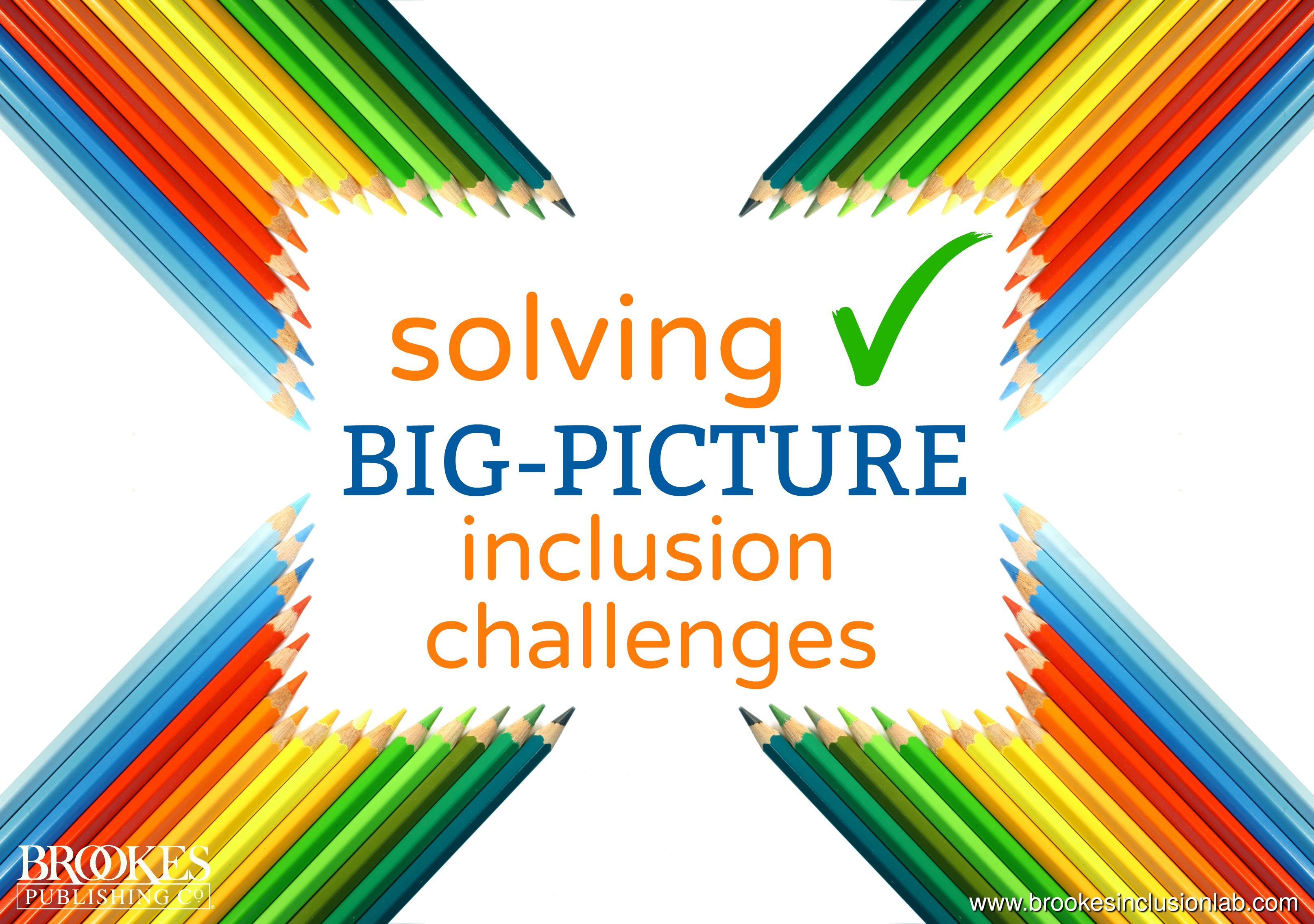Making Inclusion Happen: Big-Picture Solutions to 4 Common Challenges
November 21, 2017
Here on the Inclusion Lab, we talk a lot about inclusion at the individual classroom level–but we also know that many schools and districts are struggling with higher-level challenges to inclusive education. That’s what today’s post is all about. It’s excerpted and adapted from The Preschool Inclusion Toolbox by Erin E. Barton & Barbara J. Smith, a book that helps administrators, school district leaders, and child care directors step up the progress of early childhood inclusion through big-picture, systems-level change. (Though the book is specific to early childhood, many of their ideas will work for K-12 classrooms, too.)
In their book, Barton and Smith report on a survey they conducted to identify current challenges and solutions related to preschool inclusion. Their survey respondents had some concrete ideas for how schools and districts can approach solutions to some of the most common inclusion challenges. Here, we present four of these challenges and the survey respondents’ proposed solutions. (Since these are mostly big-picture ideas, you might want to share these with your administrator if you’re reading this as an educator.)
CHALLENGE #1: Lack of awareness or support for inclusion
How to solve it:
- Put together a project team to design a clear vision for inclusion and address attitude and belief challenges.
- Arrange meetings with successful preschool inclusion teams, so that your administrator and educators can see how real-life programs are successfully solving inclusion challenges.
- Develop a reader-friendly inclusion booklet to explain the benefits of inclusion to school district and administrators, community members, and parents.
- Provide visual models of what high-quality inclusion looks like, feels like, and sounds like in the classroom. Provide an accurate picture of developmentally appropriate practices and environments for young children.
- Encourage public statements from superintendents. Ask them to state that children with disabilities will be served in regular classes and that support will be given to teachers and students through a special education teacher and training, to recognize the benefits for all students.
- Discuss the laws regarding the rights of children with disabilities with your special education director and educators.
- Don’t forget to celebrate small successes in the movement toward inclusion. Every bit of progress helps!
CHALLENGE #2: Lack of funding for inclusion
How to solve it:
- Braid and blend funding from multiple sources as necessary for mutually beneficial relationships (e.g., Individuals with Disabilities Education Act, pre-K, Title I).
- Combine teaching forces–use paraprofessionals in combination with certified teachers for collaborative teaching or coteaching.
- Support contract negotiations with community programs that provide high-quality inclusion settings for young children with special needs.
- Write commitment letters and memoranda of agreement letters between involved parties and funders.
- Create tuition-based programs for students without IEPs to attend high-quality inclusive preschools.
- Provide blended preschool programs, serving 10 at-risk students with five students with IEPs per classroom. Secure funding for a general education teacher and special education teacher in the same classroom.
- At the state level, create a stakeholder group to discuss funding barriers, and work together on solutions. Allow funding to follow each child with an IEP into the general education setting.
- Coordinate meetings between state special education directors to discuss funding problems and solutions.
CHALLENGE #3: Lack of understanding and trust among professionals
How to solve it:
- Establish transdisciplinary teams that consist of a psychologist, social worker, speech pathologist, physical therapist, and occupational therapist working together to provide support and strategies for students with IEPs to keep them in the regular classroom.
- Provide joint professional development opportunities for teachers and administrators focused on preschool inclusion and their roles and responsibilities.
- Establish norms of communication and collaborative problem solving among key members of your team.
- Facilitate relationships and regular meetings between school district directors and community early childhood leaders so they can combine philosophies and arrange joint staff meetings, in-service training, and transportation.
- Develop productive partnerships–foster more coordination, planning, and communication between special education and local Head Start or Title I programs.
- Provide adequate time for meeting, discussing, and planning for inclusion at all levels.
- Work through challenges–commit to continuing efforts despite the issues you face, and actively and collaboratively work to move through challenges together.
CHALLENGE #4: Lack of qualified personnel who can make inclusion happen
How to solve it:
- Provide dual endorsement for educators (combined state teaching licensure for early childhood special education and general early childhood).
- Provide certifications with coteaching requirements for special education and general education.
- Offer training to private child care programs and preschools on topics related to special education, including accommodations and intervention strategies.
- Provide district-level consultation for nondistrict programs, including observation, coaching, positive behavioral recommendations, on-site therapy, and frequent meetings.
- Establish strong working relationships between community preschool teachers and public school itinerant early childhood special education teachers.
- Build training and technical assistance into the state career ladder and other venues to equip early childhood personnel with knowledge and skills.
What are some other higher-level challenges to inclusion you’ve faced in your own school/district? What did you do to solve them? Tell us in the comments below!
MORE BIG-PICTURE INCLUSION HELP
Need more in-depth guidance on breaking down inclusion barriers? Check out The Preschool Inclusion Toolbox, your guide to overcoming the challenges to inclusive early ed and creating a solid action plan for building and maintaining a successful program.




Write a Comment
Your email address will not be published. Required fields are marked *
Post a Comment